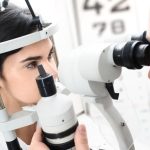Cytology Centrifuge: Your Quick Overview
Share

Cytology (cytopathology) is the study of cells extracted from bodily tissues or fluids in order to make a diagnosis. Cytology is used by healthcare providers in a variety of settings, but it is most commonly used to screen for and diagnose cancer.
The sample preparation is performed using a cytology centrifuge, which is common in immunohematology and research laboratories.
The latest generation of specialized products, the cytology centrifuge, is appropriate for hospital clinical testing, chemical laboratory and blood station, plasma station for blood and other samples.
Applications
Some applications of cytology centrifuges include:
- Differential cell counts are performed on bodily fluids such as synovial, serous, and cerebrospinal fluid.
- Examining liquid specimens such as body fluids and fine needle aspirates for cytopathology.
- Microorganism identification using Gram staining of fluid specimens.
How It’s Used
A funnel assembly is mounted on the front of a microscope slide to prepare cytology centrifuge smears. Filter paper is used to absorb excess fluid on the surface of the funnel assembly that is in contact with the slide. The funnel is filled with a few drops of fluid. To preserve cellular structure, the assembly is placed in a cytocentrifuge that operates at a low force (600–800 x g).
The fluid is pushed through the funnel opening by centrifugal force, which concentrates the cells in a small area of the slide. The centrifugation process concentrates cells approximately twenty-fold and creates a one-cell-thick monolayer, allowing cellular morphology to be evaluated. After that, the slide can be stained and fixed.
Limitations
Cells can become distorted during the centrifugation process. Cells in the smear’s center may appear compressed in comparison to cells on the smear’s periphery. Cell nuclei can form artificial clefts, lobes, or holes, and the cytoplasm can become vacuolated or develop irregular projections.
The cell’s cytoplasmic granules may be pushed to the cell’s periphery. Cells may be distorted due to crowding if the cell count is high. Therefore, samples with high cell counts are diluted before smear preparation.


















Social Media